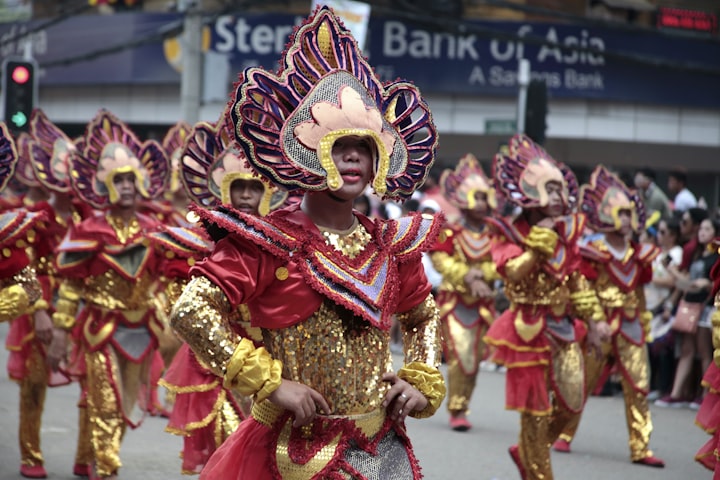Philippine Festivals
Explore the vibrant and colorful festivals celebrated throughout the Philippines. Discuss the significance of festivals like Sinulog, Panagbenga, and Pahiyas, highlighting their cultural, religious, and historical importance.

The Philippines is renowned for its vibrant and diverse festivals that showcase the country's rich cultural heritage. These festivities are a testament to the Filipino people's passion for celebration, and they provide a glimpse into the nation's colorful traditions, religious devotion, and historical significance. Three of the most notable festivals in the Philippines are Sinulog, Panagbenga, and Pahiyas.
Sinulog Festival:
Sinulog is an annual cultural and religious festival held in Cebu City, usually on the third Sunday of January. It is one of the grandest and most famous festivals in the Philippines, drawing thousands of participants and spectators from all over the country. The festival commemorates the Filipino people's conversion to Christianity and honors the Santo Niño (Child Jesus).
The word "Sinulog" comes from the Cebuano term "sulog," which means "like water current movement." The main highlight of the festival is the street dance competition, where participants dressed in vibrant costumes perform a dance inspired by the movements of the river. They chant "Pit Señor," which means "Hail, Lord" in the local language, while dancing to the rhythmic beat of drums and traditional music.
The Sinulog Festival holds great religious significance as it celebrates the acceptance of Christianity by the early Filipino inhabitants. It is also a time for Cebuanos to express their devotion to the Santo Niño, seeking blessings and protection for their families and communities. The festival is a joyous and colorful celebration of faith, culture, and unity.
Panagbenga Festival:
Panagbenga, also known as the "Flower Festival," is an annual month-long celebration held in Baguio City, the summer capital of the Philippines. The festival takes place in February, a time when flowers are in full bloom in the region. Panagbenga showcases the abundance of floral beauty and pays homage to the city's agricultural roots.
The festival began in 1995 as a way to uplift the spirits of the people of Baguio after the devastating earthquake that hit the region. It has since become one of the most anticipated events in the country, attracting both local and international tourists.
The main highlight of Panagbenga is the grand float parade, where intricately decorated floats adorned with vibrant flowers make their way through the streets. Participants also engage in street dancing, wearing floral-inspired costumes and performing choreographed routines. The month-long celebration includes various activities such as garden shows, street performances, and a grand fireworks display.
Panagbenga is a celebration of the city's resilience, beauty, and the abundance of its natural resources. It highlights the importance of agriculture and tourism in the region while promoting environmental conservation and the preservation of Baguio's unique ecosystem.
Pahiyas Festival:
Pahiyas is a colorful harvest festival celebrated in Lucban, Quezon Province, usually on May 15th. The festival is a way for the locals to express gratitude for a bountiful harvest and seek blessings for the upcoming planting season. It is also a celebration of San Isidro Labrador, the patron saint of farmers.
During the Pahiyas Festival, houses in the town are adorned with vibrant and creative displays made from agricultural products, such as rice, fruits, vegetables, and handicrafts. These decorations are meticulously arranged and hung outside the houses, transforming the entire town into a stunning visual spectacle.
The most iconic decoration in the Pahiyas Festival is the kiping, colorful rice wafers shaped like leaves or other creative designs. These kipings are dyed using natural food coloring and are skillfully arranged to form elaborate and intricate patterns.
The festival also includes a procession featuring a statue of San Isidro Labrador, street dancing, traditional music, and a culinary showcase of local delicacies. It is a lively celebration of the town's agricultural heritage, promoting local tourism and fostering a sense of community and unity among the residents.
These festivals - Sinulog, Panagbenga, and Pahiyas - are just a glimpse into the vibrant and colorful tapestry of festivals celebrated throughout the Philippines. Each festival carries its own cultural, religious, and historical significance, providing a platform for Filipinos to express their faith, creativity, and community spirit. These celebrations serve as a testament to the rich traditions, resilience, and joyous nature of the Filipino people.





Comments
There are no comments for this story
Be the first to respond and start the conversation.